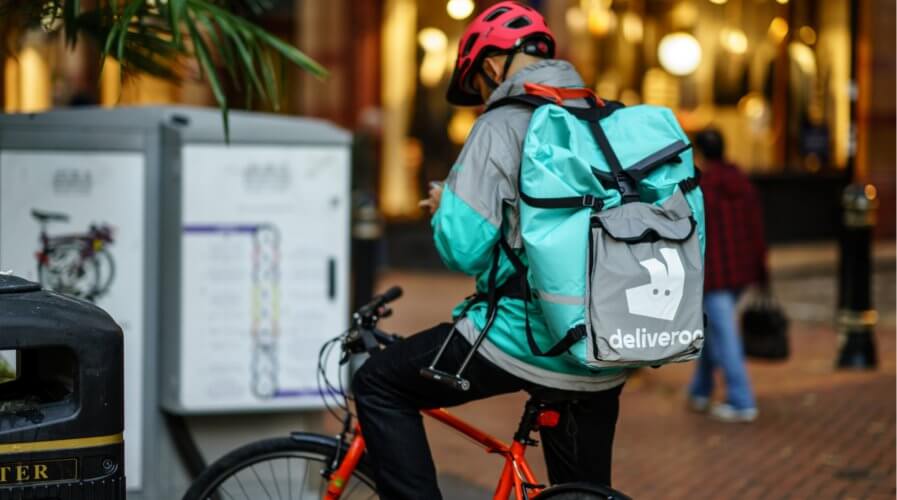
Deliveroo has kept restaurants connected to patrons. Source: Shutterstock
How Singapore’s app economy is bucking a retail slump
- Apps are proving the preferred shopping medium in Singapore, as physical retail sales continue to decline
- Deliveroo & Shopee have seen tremendous growth in users, superseding previous projections
Retail therapy has been a long-favored pastime for Singapore’s citizens, but physical retail sales took a hit in 2019 for the second consecutive year.
This downward trend has only been exacerbated by COVID-19 and Singapore’s ‘Circuit Breaker’ restriction measures which, like everywhere else, has seen the population moving and staying indoors in droves.
Where’s the money going? Online. In fact, popular e-commerce platforms like local hero Shopee, and UK-export Deliveroo were uniquely positioned to help the city state’s traditionally brick-and-mortar businesses capitalize on the opportunity of hungry online shoppers.
Via their platforms, they enabled certain businesses to pivot their retail strategies online. After all, consumers still want products for entertainment, work, or for decorating their apartment. Even grocery deliveries are a safer, move convenient option than going to the local mart.
All this means that while Singapore’s e-commerce revenue has been growing steadily year-on-year, the present climate is poised to send it into overdrive.
Online delivery service Deliveroo told Retail Asia that the platform saw an average 20 percent increase in orders every month between February and April of this year, and that more than 700 new restaurants had signed up to the platform from late January 2020.
In early March, there was another 50 percent jump in new eateries joining the platform for delivery services.
Many of these restaurants are engaging online delivery operations for the first time, thereby opening a new avenue for sales at a time when dine-in revenue is virtually impossible to obtain.
Deliveroo even experienced an 80 percent increase in delivery rider applications in March, using data analytics to ascertain the connection between order quantities and having the right number of riders to meet the demand.
Popular regional e-retail platform Shopee has likewise seen a surge in traffic to its site, with strong transaction volumes during the same period. And its made efforts to ensure its there to support customers round the clock, while other retailers and platforms may be crumbling under demand.
Its ‘Shopee Shop From Home’ marketing campaign reminds consumers that all its service channels, whether it’s calling a hotline, email, or live chatting with a representative, continue to remain active during this time in all its active markets.
Both Shopee and Deliveroo claim to be prioritizing health and safety guidelines, too – Deliveroo has been encouraging contactless deliveries between rider and customer, while Shopee has been limiting orders of essential items such as face masks to ensure there is adequate supply.
Apps like Deliveroo and Shopee may be seeing a boom in business as a result of the current social distancing measures, and the associated disruption.
But at the same time, they are also ensuring that consumers get the goods they need, that purchasing continues to happen, and that many smaller businesses can quickly shift their operations online.
READ MORE
- Strategies for Democratizing GenAI
- The criticality of endpoint management in cybersecurity and operations
- Ethical AI: The renewed importance of safeguarding data and customer privacy in Generative AI applications
- How Japan balances AI-driven opportunities with cybersecurity needs
- Deploying SASE: Benchmarking your approach


